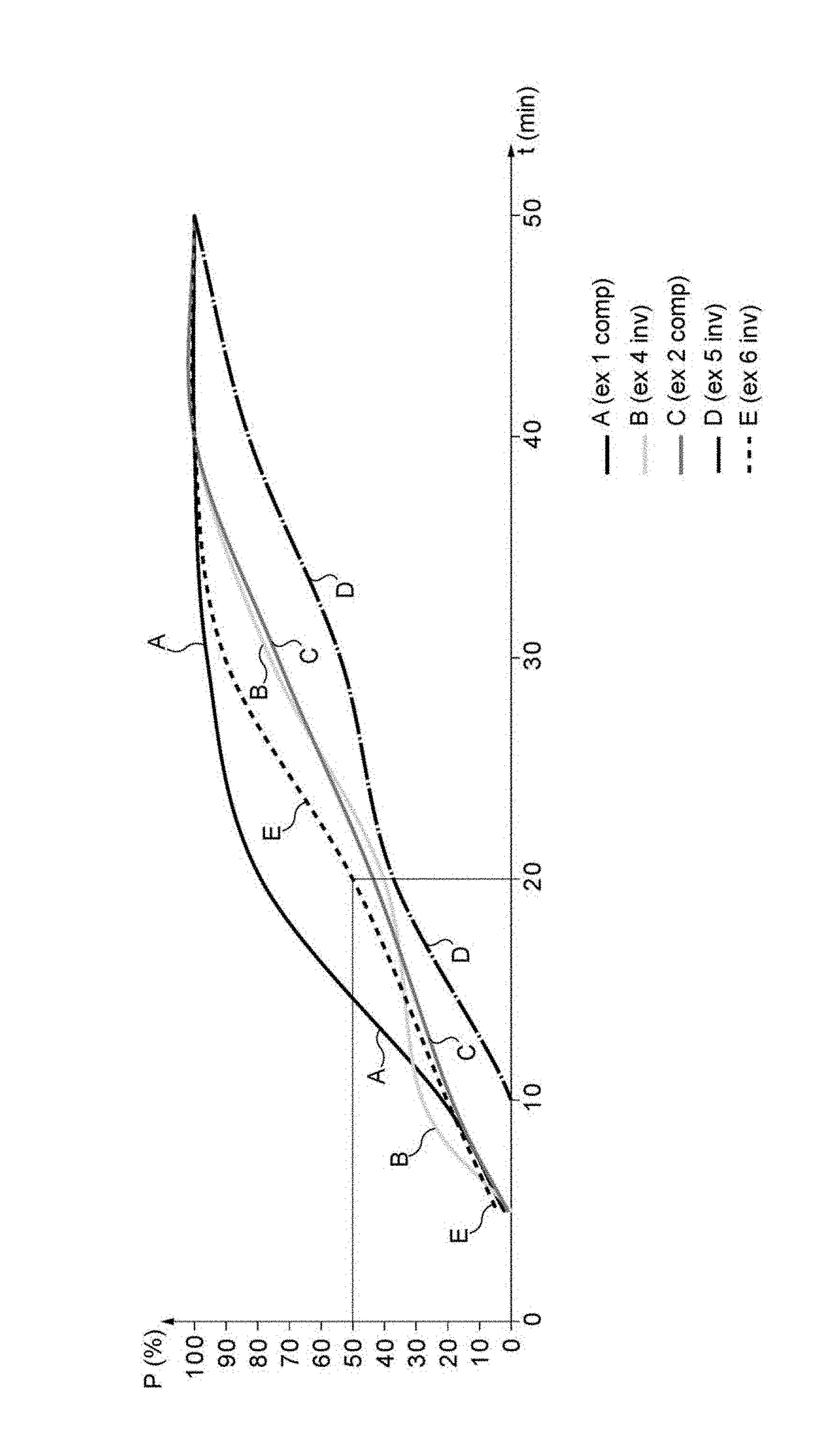Method for obtaining a foundry body from a granular mixture comprising a modified polycondensed resin and a formaldehyde scavenger
- Summary
- Abstract
- Description
- Claims
- Application Information
AI Technical Summary
Benefits of technology
Problems solved by technology
Method used
Image
Examples
example 4 (
According to the Invention)
Resin: Urea—formaldehyde resin comprising vanillin, which was synthesized in an acid medium with a formaldehyde / urea molar ratio of 2.37, and to which vanillin was added in a urea / vanillin molar ratio of 4.5.
The vanillin content with respect to the resin is 11.3% by weight.
This resin was used at 2% with respect to the sand.
Catalyst: Catalyst constituted by 1.4% hydroxylamine in solution at 50%, 1.7% p-toluene sulphonic acid in solution at 65%, 15.1% carbohydrazide, 2.2% hydroxylamine sulphate and 79.7% water.
This catalyst was used at 0.4% with respect to the sand.
Box Temperature: 120° C.
Hot air temperature: 100-120° C.
Hot bending strength on removal from the box: respectively at 30, 60 and 120 seconds: 15, 30 and 45 daN / cm2
Cold bending resistance, respectively at 30, 60 and 120 seconds: 55, 60 and 65 daN / cm2
The hot and cold bending strengths are sufficient to allow, respectively, handling of the formed bodies and casting of the metal.
Formaldehyde on mixi...
example 5 (
According to the Invention)
[0113]Resin: Urea-melamine / formaldehyde resin, which was synthesized with a formaldehyde / urea molar ratio of 2.95 and to which melamine was added in a formaldehyde / melamine molar ratio of 3.45 then to which was added 3% Fintan 737B modified tannin, a commercial product from the company Indunor (modified condensed tannin originating from Schinopsis lorentzii or Quebracho colorado in powder).
This resin was used at 2.2% with respect to the sand.
Catalyst: Catalyst containing 14% hydroxylamine sulphate, 20% carbohydrazide and 66% water.
This catalyst was used at 0.3% with respect to the sand.
Box Temperature: 130° C.
Hot air temperature: 100-120° C.
Hot bending strength on removal from the box: respectively at 30, 60 and 120 seconds: 15, 24 and 42 daN / cm2
Cold bending resistance, respectively at 30, 60 and 120 seconds: 75, 84 and 95 daN / cm2
The hot and cold bending strengths are sufficient to allow, respectively, handling of the formed bodies and casting of the met...
example 6 (
According to the Invention)
[0114]Resin: Urea / formaldehyde modified tannin, which was synthesized with a formaldehyde / urea molar ratio of 2.37, and to which was added 25% Fintan 737C modified tannin, a commercial product from the company Indunor (stabilized condensed tannin originating from Schinopsis lorentzii or Quebracho colorado in solution at 45%).
This resin was used at 2% with respect to the sand.
Catalyst: Catalyst containing 14% hydroxylamine sulphate, 20% carbohydrazide and 66% water.
This catalyst was used at 0.3% with respect to the sand.
Box Temperature: 130° C.
Hot air temperature: 100-120° C.
Hot bending strength on removal from the box: respectively at 15, 30 and 60 seconds: 6, 13 and 21 daN / cm2
Cold bending resistance, respectively at 15, 30 and 60 seconds: 31, 40 and 45 daN / cm2
The hot and cold bending strengths are sufficient to allow, respectively, handling of the formed bodies and casting of the metal.
Formaldehyde on mixing: less than 0.2 ppm (undetectable)
Formaldehyde...
PUM
| Property | Measurement | Unit |
|---|---|---|
| Temperature | aaaaa | aaaaa |
| Temperature | aaaaa | aaaaa |
| Temperature | aaaaa | aaaaa |
Abstract
Description
Claims
Application Information
 Login to View More
Login to View More - R&D Engineer
- R&D Manager
- IP Professional
- Industry Leading Data Capabilities
- Powerful AI technology
- Patent DNA Extraction
Browse by: Latest US Patents, China's latest patents, Technical Efficacy Thesaurus, Application Domain, Technology Topic, Popular Technical Reports.
© 2024 PatSnap. All rights reserved.Legal|Privacy policy|Modern Slavery Act Transparency Statement|Sitemap|About US| Contact US: help@patsnap.com








